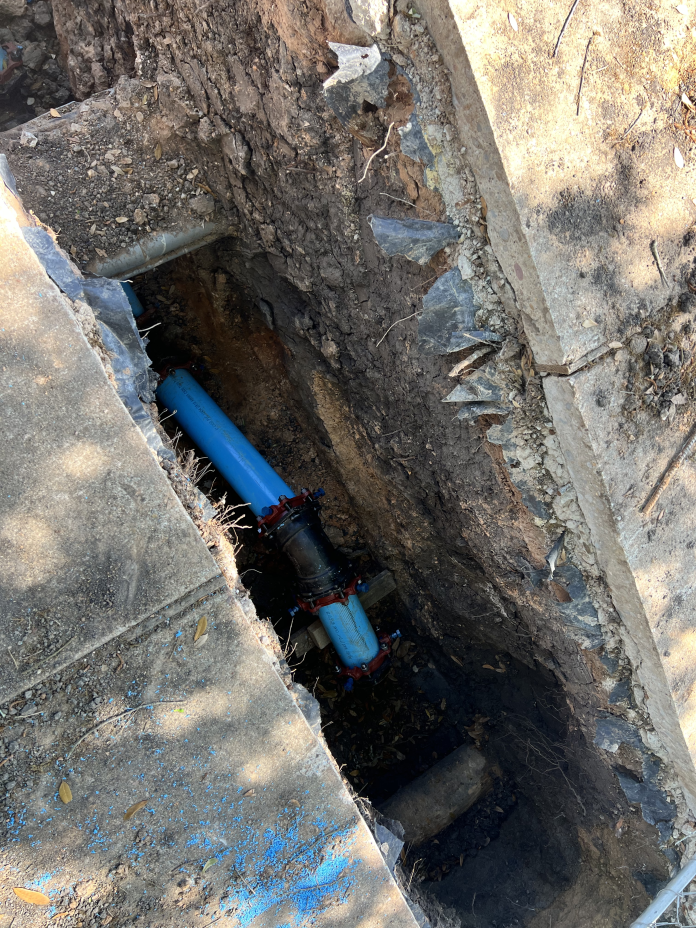An underground fire line links the city’s water supply to a fire protection system in a building, while the riser is the vertical pipe that connects this underground line to the sprinkler system above ground. In simple terms, the underground line supplies water to the building, and the riser directs it to the sprinklers.
Underground Fire Line:
Function: The underground fire line serves as the main water supply for the fire protection system in a building, typically running from the municipal water source to the foundation of the building.
Materials: It is usually constructed from robust, rust-resistant materials such as ductile iron or steel or C900.
Installation: This line is placed underground, generally deep enough to avoid being frozen or damaged. It often needs to have specific distances maintained from foundations and other constructions.
Termination: The underground line ends at a flange where it connects to the sprinkler riser.
Testing: The underground pipes undergo hydrostatic testing to ensure they can handle the required pressure.
Fire Sprinkler Riser (which we do not normally install):
Function: The riser is a vertical pipe that goes from the underground fire line up to the sprinklers above ground.
Connection: It links the underground main to the sprinkler system, enabling water to rise to the sprinkler heads.
Location: Typically, the riser is found inside the building, often close to an outside wall.
Components: It contains a flange for connecting to the underground line and may have valves, gauges, and other parts depending on how the system is designed.
Clearances: The riser must have enough space from the floor slab and walls to allow for expansion and contraction and to avoid any damage.
Flushing: Before connecting to the riser, the underground pipes are flushed to clear out debris and ensure the system works correctly.


